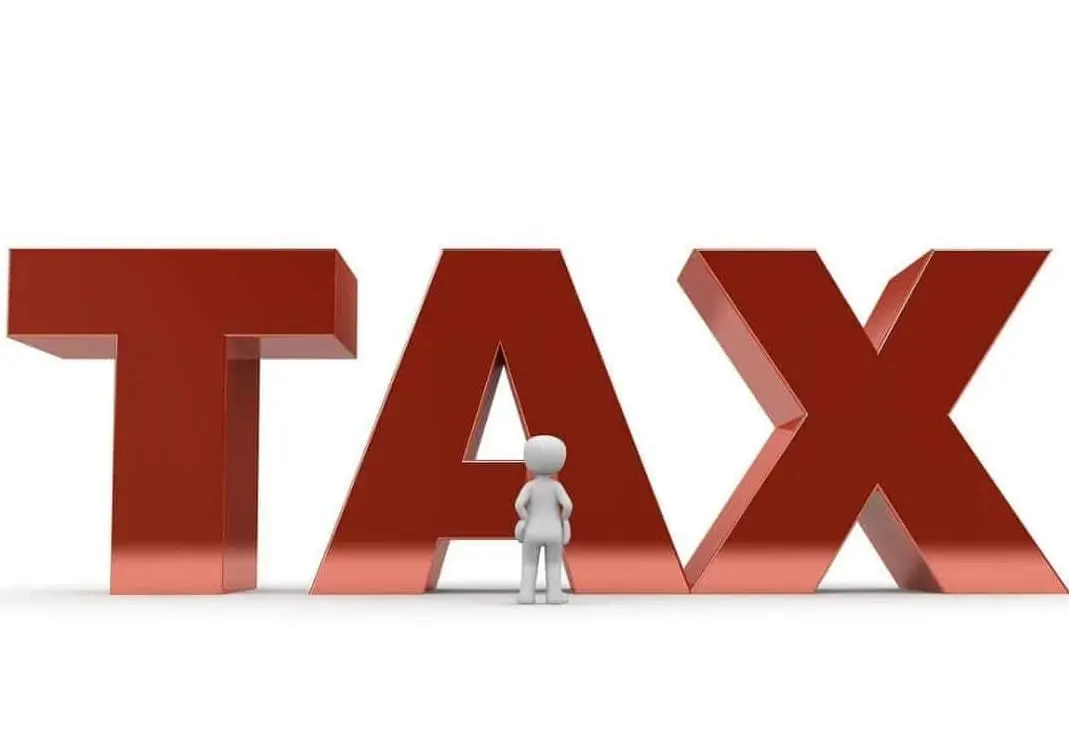
Why you’ll pay more tax in the coming tax year – and how to avoid it
- More tax on pay: frozen income tax and NI thresholds mean more people will pay both taxes.
- More tax on investments: the first full tax year of the capital gains tax hike for stocks and shares.
- More inheritance tax: Frozen inheritance tax thresholds will mean more IHT—even before the changes to the IHT treatment of pensions.
- More tax for people buying property: the stamp duty holiday is ending.
- More council tax: bills will rise by up to 4.99%.
- More car tax: new charges for EVs.
Sarah Coles, head of personal finance, Hargreaves Lansdown:
“A new tax year usually ushers in a wave of changes. This year, we’re not getting the rising allowances or thresholds we might expect, which is going to take a serious toll on your financial resilience. There are also a handful of tax hikes, which will be decidedly unwelcome. A combination of the two means there’s every chance you’ll pay more tax in the new tax year.
Plus, there’s the rise in employers’ NI, which isn’t a direct tax on us, but it means your employer will need to pay more tax on your wages. There’s a real risk that they decide to claw back some of the costs by taking the axe to wage rises during the year.
Fortunately, you can take steps to avoid some of the worst tax pain, and getting started early will give you the best possible chance of keeping your hard-earned money out of the taxman’s clutches.
More tax on pay: frozen income tax and NI thresholds mean more people will pay both taxes
Income tax and National Insurance thresholds will be frozen until 2028, and between now and then, every pay rise will mean you pay more tax and creep ever closer to crossing a tax threshold. The OBR estimates that this fiscal drag will mean 3.5 million more taxpayers in the coming tax year than when the thresholds were frozen and 2.7 million higher and additional rate tax. Around a fifth of taxpayers pay higher or additional rates already, which will only worsen.
This means that some people will be pushed over their personal allowance and forced to pay income tax and national insurance for the first time, while others will find themselves facing higher or additional tax rates. At that point, it’s not just more income tax you have to worry about, but potentially higher rates on everything from dividend tax to capital gains tax, and a shrinking personal savings allowance.
More tax on investments: it’s the first full tax year of the capital gains tax hike for stocks and shares
We were hit by the rise in the capital gains tax rate for stocks and shares investors with assets outside ISAs and pensions—from 10% to 18% for basic rate taxpayers and from 20% to 24% for higher and additional rate taxpayers in October—but this is the first full year that we have faced the impact of the change all year.
It’s a particularly harsh blow for couples who manage their finances to ensure the lower earner pays any capital gains tax because the rate for these taxpayers has risen more than for higher earners.
More inheritance tax: frozen inheritance tax thresholds will mean more IHT
We’ll pay more of this tax even before the scheduled change to inheritance tax on pensions. The inheritance tax nil rate band will remain at £325,000, and the residence nil rate band at £175,000 in the next tax year. Thanks to the Budget, it will stay at this level until 2030. Meanwhile, the IHT annual gift allowance is spending its fourth decade at £3,000. It means more estates will have more inheritance tax (IHT) to pay.
IHT used to be seen as a wealthy person’s tax, but a mix of booming house prices and threshold freezes means this may not be the case for much longer. It means we’re spending much more in tax—and are likely to continue to do so.
More tax for people buying property, as the stamp duty holiday comes to an end
At the start of April, the stamp duty threshold will drop from £250,000 to £125,000, the threshold for first-time buyers will fall from £425,000 to £300,000, and the maximum value of property to benefit from the first-time buyer threshold will increase from £625,000 to £500,000. This will mean extra tax when people are already wrestling with the endless costs of buying a home.
It’s also the first full year of the higher stamp duty surcharge for property investors – another reason why investing in residential property is one of the least tax-efficient options.
Higher council tax
Councils can raise taxes by 3% plus another 2% for social care without a referendum. It means band D council tax will rise from an average of £2,171 to £2,280 from the start of April. Those local governments struggling to make ends meet will impose even more significant hikes.
Car tax for more drivers
The standard rate will rise £5 to £195, but there are more considerable changes than usual, with the introduction of a tax on newer electric cars – at £10 in the first year and then £195 each year after that. Electric cars worth over £40,000 will also face the expensive car surcharge. The first-year charge will also rise significantly: new petrol and diesel cars that previously faced a first-year charge of £220 will increase to £440.

7 ways to cut tax in 2025/26
Use your ISAs
The government offers the chance to squirrel away £20,000 in the current tax year, and from 6 April, you can shelter another £20,000 – completely free of tax. The earlier you take advantage during the tax year, the more tax you can save. A stocks and shares ISA will protect you from higher capital gains tax, while a cash ISA will protect you from income tax.
If you’re saving to buy a first property, are aged 18-39, and have at least a year until you expect to buy, you should consider a LISA because you get a 25% bonus on contributions in addition to tax-free growth. You can save or invest £4,000 this tax year.
Don’t forget Junior ISAs, too. In the current and next tax years, you can save or invest £9,000 in a JISA for any qualifying child, and all interest, dividends or capital gains are tax free.
Use your capital gains tax allowance
You can protect yourself from higher capital gains tax by realising gain as you go along. You can make gains of £3,000 this side of the tax year, and another £3,000 when the clock ticks past midnight on 5 April. You can also use the Bed and ISA (share exchange) process to move the assets into an ISA, to protect them from future capital gains.
Don’t forget that you can offset any capital losses you make during the tax year against gains. If your total taxable gain is still over the tax-free allowance, you may be able to deduct any unused losses from previous tax years. If just some of your losses reduce your gain to below the tax-free allowance, you can carry forward the remaining losses to a future tax year
Don’t forget pensions.
You can pay up to £60,000 into a pension in the current tax year. Pension contributions attract tax relief at your highest marginal rate, and the first 25% taken from the pension is usually tax-free. There’s tax relief on pensions, including SIPPS, even for non-taxpayers – on the first £3,600 a year. It means you can contribute tax-efficiently to a pension for a child or a non-working partner. If you can afford to put more money away for the long term, it’s a great way to cut your tax bill and secure the income you need in retirement.
Look into salary sacrifice.
In some cases, the government will let you give up a portion of your salary and spend it on certain things free of tax (and, in some cases, National Insurance). This includes pensions, childcare vouchers, bike-to-work schemes, and technology schemes. Where employers offer to put their NI saving into the scheme, the hike in employers’ NI will make this an even more attractive option. It won’t boost your take-home pay but will cut your tax bill and make your money go further, so it’s worth checking with your employer whether they offer this.
Explore spouse exemptions
If you’ve already used your ISA allowance and have assets that produce an income – like shares paying dividends or a property – married people should consider how they hold them. They can be passed between spouses (or civil partners) without triggering a tax bill. They can, therefore, be shared between a couple so that both take advantage of their ISA allowances and can both take an income up to the threshold. The balance can be held by the spouse paying the lower tax rate to reduce the tax payable.
Consider gifts
If you’re worried about inheritance tax, you have an annual gifting allowance of £3,000, which falls out of your estate immediately for IHT purposes. If you didn’t use it in the last tax year, you can carry it forward and give £6,000. Then you can provide another £3,000 at the start of the new tax year. You can also provide smaller gifts of up to £250 to as many people as you like – although not to anyone benefitting from your annual allowance. If you’re married, you can both take advantage of your allowances.
On top of that, you can make more significant gifts, which will fall out of your estate after seven years, so you may want to get the clock ticking on those. A rule also allows you to make regular gifts from your ‘surplus income’ that should fall straight out of your estate. You don’t need to make the gift directly to the individual. You can pay into a Junior ISA for children, which they can access when they turn 18.
Marriage allowance
If one spouse is a non-taxpayer and the other is a basic rate taxpayer, the marriage allowance lets the non-taxpayer give £1,260 of their allowance to their spouse in the current tax year.”

